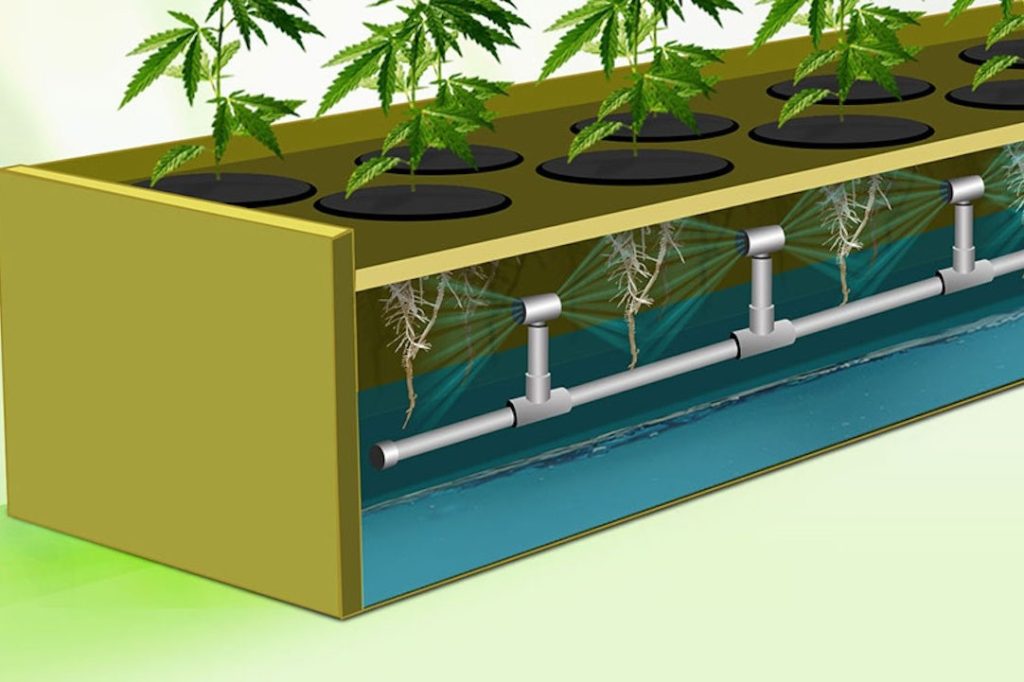nCa Report
Now we move to some new ideas that just might give some boost to the agriculture sector in Central Asia.
The region is already familiar with Hydroponics. Today we are presenting a short report on Aeroponics and its suitability for Central Asia. This report has been produced in interactive mode with AI.
What is Aeroponics?
Aeroponics is a soil-free agricultural method where plants grow in an air/mist environment. Roots are suspended in a closed or semi-closed chamber and periodically sprayed with a nutrient-rich mist.
Main Elements:
– Growth Chamber: Enclosed structure to hold plants (e.g., vertical towers, trays).
– Misting System: Nozzles that spray fine droplets of nutrient solution onto roots.
– Nutrient Delivery System: Pumps, reservoirs, and filters to circulate the solution.
– Automation: Sensors (pH, humidity, temperature) and timers to optimize misting cycles.
– Lighting: Artificial LEDs (for indoor setups) or natural light in greenhouse integrations.
How Does It Work?
– Plants are anchored in foam or mesh supports, exposing roots to air.
– A nutrient mist is sprayed at intervals (e.g., every few minutes) to deliver water, oxygen, and minerals.
– Roots absorb nutrients directly, accelerating growth.
– Systems are often automated to regulate environmental conditions (e.g., humidity, temperature).
Suitable Crops
Aeroponics is ideal for:
– Leafy greens: Lettuce, spinach, kale.
– Herbs: Basil, mint, cilantro.
– Fruits/Vegetables: Strawberries, tomatoes, peppers.
– Root crops: Radishes, potatoes (with adaptations).
Not ideal for large, heavy plants (e.g., corn, wheat) due to structural and root space constraints.
The cost of setting up an Aeroponics farm
The initial cost of setting up an aeroponics farm can be prohibitive and discouraging. The average private farmer in Central Asia would not be able to afford it.
The expensive elements include the basic greenhouse setup, automation, lighting, climate control, etc.
In addition to the initial cost, there are the running expenses such as electricity for lighting/pumps, nutrients, and maintenance.
Benefits of Aeroponics:
– Water savings: Uses ~95% less water than traditional farming.
– Faster growth: Higher yields (e.g., 3–5x more cycles annually).
– Space efficiency: Vertical stacking increases output per unit area.
– Reduced pests: Closed systems minimize pesticide use.
– Year-round production: Climate-controlled environments enable continuous harvests.
Break-Even: 3–5 years for high-tech setups, depending on crop value and market prices.
Aeroponics vs. Traditional Farming
| Aspect | Aeroponics | Traditional Farming |
| Costs | High upfront, lower long-term operational | Low upfront, higher water/input costs |
| Maintenance | Technical (automation monitoring) | Labor-intensive (plowing, weeding) |
| Ecological Impact | Minimal water use, no soil erosion | High water use, chemical runoff risk |
Advantages:
– Resource efficiency: Ideal for water-scarce regions.
– Sustainability: Reduces land degradation and agrochemical use.
Recommendation for Central Asia
Why Aeroponics Fits Central Asia:
Water Scarcity: Central Asia faces arid climates and shrinking water resources (e.g., Aral Sea crisis). Aeroponics uses 95% less water.
Limited Arable Land: Only 10–20% of land in Kazakhstan/Uzbekistan is arable. Vertical systems maximize space.
Climate Resilience: Extreme temperatures and soil salinity are bypassed.
Food Security: Enables year-round production of fresh produce, reducing import reliance.
Challenges:
– High Initial Investment: Requires government subsidies or private-sector partnerships.
– Energy Demands: Solar/wind energy potential in the region could offset costs.
– Technical Training: Farmers need education in system management.
Conclusion
Aeroponics is a transformative solution for Central Asia, addressing water scarcity, land constraints, and climate challenges. While initial costs are high, long-term benefits in sustainability and productivity justify investment, especially with renewable energy integration and policy support.
References:
– FAO reports on Central Asian agriculture.
– Case studies from NASA (aeroponics in controlled environments).
– Cost data from Agritecture and industry benchmarks.
/// nCa, 10 April 2025 (to be continued . . .)
